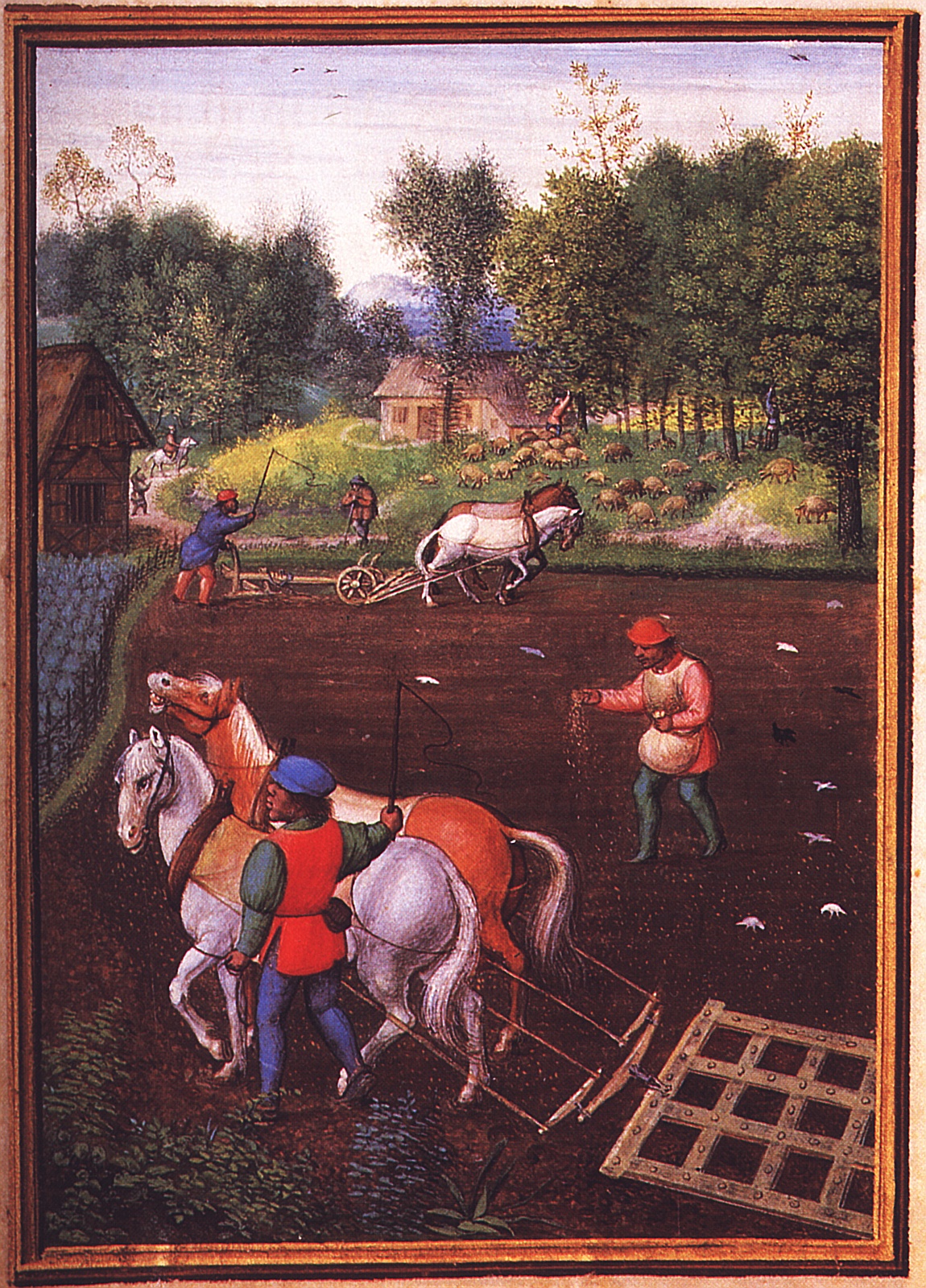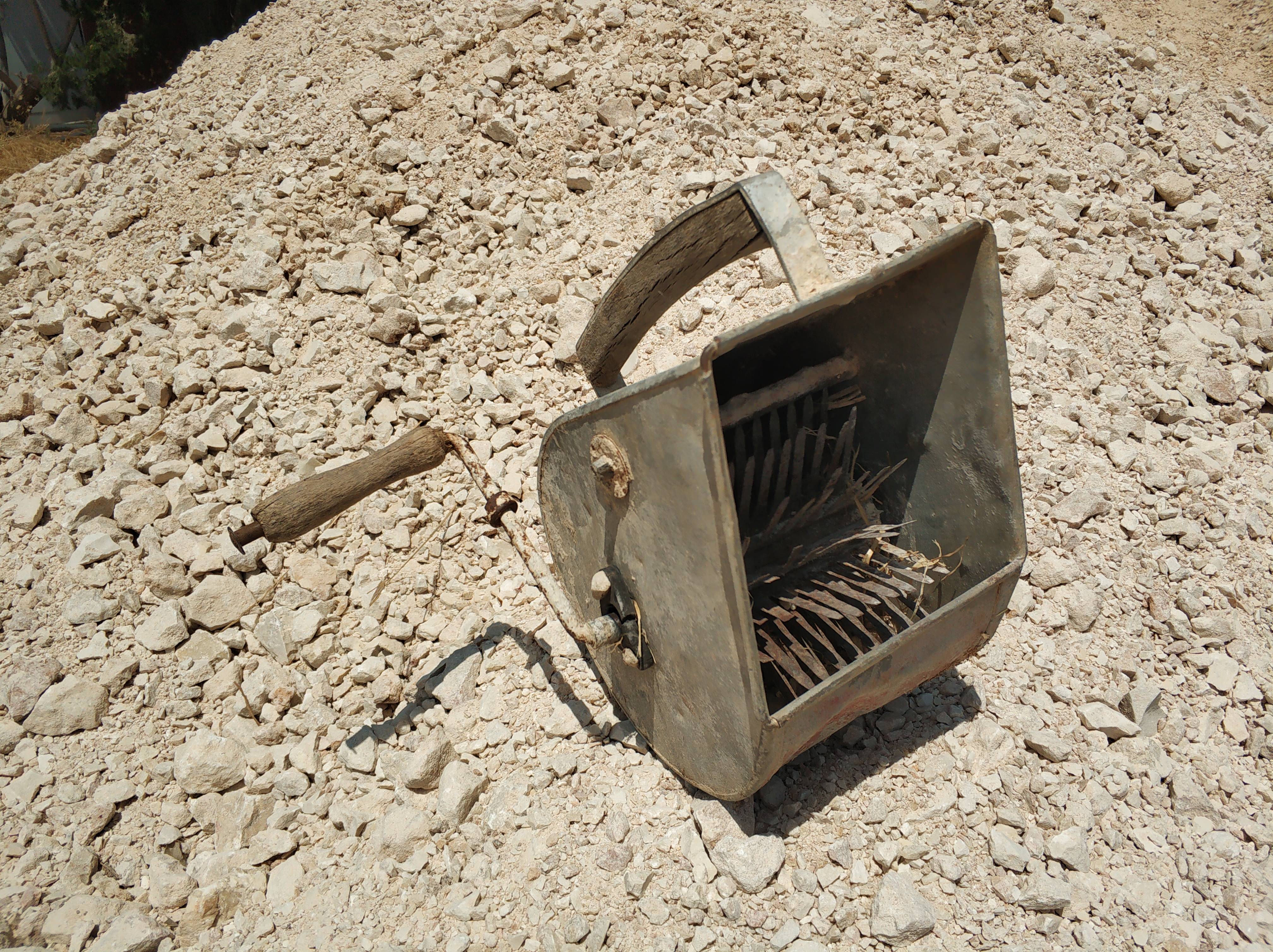Sowing on:
[Wikipedia]
[Google]
[Amazon]


 Sowing is the process of planting seeds. An area or object that has had seeds planted in it will be described as a sowed or sown area.
Sowing is the process of planting seeds. An area or object that has had seeds planted in it will be described as a sowed or sown area.
Sprout safety: how to combat contamination of seed
Seed washing is generally done by submerging cleansed seeds 20 minutes in 50 degree Celsius water.Exotische vruchten kweken by Dr Gabriele Lehari This (rather hot than moderately hot) water kills any organisms that may have survived on the skin of a seed. Especially with easily infected tropical fruit such as


 Sowing is the process of planting seeds. An area or object that has had seeds planted in it will be described as a sowed or sown area.
Sowing is the process of planting seeds. An area or object that has had seeds planted in it will be described as a sowed or sown area.
Plants which are usually sown
Among the major field crops, oats,wheat
Wheat is a grass widely cultivated for its seed, a cereal grain that is a worldwide staple food. The many species of wheat together make up the genus ''Triticum'' ; the most widely grown is common wheat (''T. aestivum''). The archaeologi ...
, and rye are sown, grasses and legumes are seeded and maize
Maize ( ; ''Zea mays'' subsp. ''mays'', from es, maíz after tnq, mahiz), also known as corn (North American English, North American and Australian English), is a cereal grain first domesticated by indigenous peoples of Mexico, indigenous ...
and soybean
The soybean, soy bean, or soya bean (''Glycine max'') is a species of legume native to East Asia, widely grown for its edible bean, which has numerous uses.
Traditional unfermented food uses of soybeans include soy milk, from which tofu ...
s are planted. In planting, wider rows (generally 75 cm (30 in) or more) are used, and the intent is to have precise; even spacing between individual seeds in the row, various mechanisms have been devised to count out individual seeds at exact intervals.
Depth of sowing
In sowing, little if any soil is placed over the seeds, as seeds can be generally sown into the soil by maintaining a planting depth of about 2-3 times the size of the seed.Sowing types and patterns
For hand sowing, several sowing types exist; these include: * Flat sowing * Ridge sowing * Wide bed sowing Several patterns for sowing may be used together with these types; these include: * Regular rows * Rows that are indented at the even rows (so that the seeds are * Symmetrical grid pattern – using the pattern described inThe Garden of Cyrus
''The Garden of Cyrus'', or ''The Quincuncial Lozenge, or Network Plantations of the Ancients, naturally, artificially, mystically considered'', is a discourse by Sir Thomas Browne. First published in 1658, along with its diptych companion '' Ur ...
placed in a crossed pattern). This method is much better, as more light may fall on the seedlings as they come out.
Types of sowing
Hand sowing
Hand sowing or (planting) is the process of casting handfuls of seed over prepared ground, or broadcasting (from which the technological term is derived). Usually, a drag or harrow is employed to incorporate the seed into the soil. Though labor-intensive for any but small areas, this method is still used in some situations. Practice is required to sow evenly and at the desired rate. A hand seeder can be used for sowing, though it is less of a help than it is for the smaller seeds ofgrasses
Poaceae () or Gramineae () is a large and nearly ubiquitous family of monocotyledonous flowering plants commonly known as grasses. It includes the cereal grasses, bamboos and the grasses of natural grassland and species cultivated in lawns ...
and legumes
A legume () is a plant in the family Fabaceae (or Leguminosae), or the fruit or seed of such a plant. When used as a dry grain, the seed is also called a pulse. Legumes are grown agriculturally, primarily for human consumption, for livestock for ...
.
Hand sowing may be combined with pre-sowing in seed tray
A tray is a shallow platform designed for the carrying of items. It can be fashioned from numerous materials, including silver, brass, sheet iron, paperboard, wood, melamine, and molded pulp. Trays range in cost from inexpensive molded pulp tray ...
s. This allows the plants to come to strength indoors during cold periods (e.g. spring in temperate countries).
Seed drill
Inagriculture
Agriculture or farming is the practice of cultivating plants and livestock. Agriculture was the key development in the rise of sedentary human civilization, whereby farming of domesticated species created food surpluses that enabled people ...
, most seed is now sown using a seed drill, which offers greater precision; seed is sown evenly and at the desired rate. The drill also places the seed at a measured distance below the soil, so that less seed is required. The standard design uses a fluted feed metering system, which is volumetric in nature; individual seeds are not counted. Rows are typically about 10–30 cm apart, depending on the crop
A crop is a plant that can be grown and harvested extensively for profit or subsistence. When the plants of the same kind are cultivated at one place on a large scale, it is called a crop. Most crops are cultivated in agriculture or hydropon ...
species and growing conditions. Several row opener types are used depending on soil type and local tradition. Grain drills are most often drawn by tractor
A tractor is an engineering vehicle specifically designed to deliver a high tractive effort (or torque) at slow speeds, for the purposes of hauling a trailer or machinery such as that used in agriculture, mining or construction. Most commo ...
s, but can also be pulled by horse
The horse (''Equus ferus caballus'') is a domesticated, one-toed, hoofed mammal. It belongs to the taxonomic family Equidae and is one of two extant subspecies of ''Equus ferus''. The horse has evolved over the past 45 to 55 million yea ...
s. Pickup truck
A pickup truck or pickup is a light-duty truck that has an enclosed cabin, and a back end made up of a cargo bed that is enclosed by three low walls with no roof (this cargo bed back end sometimes consists of a tailgate and removable covering) ...
s are sometimes used, since little draft is required.
A seed rate of about 100 kg of seed per hectare (2 bushels per acre) is typical, though rates vary considerably depending on crop species, soil conditions, and farmer's preference. Excessive rates can cause the crop to lodge, while too thin a rate will result in poor utilisation of the land, competition with weeds and a reduction in the yield.
Open field
Open-field planting refers to the form of sowing used historically in the agricultural context whereby fields are prepared generically and left open, as the name suggests, before being sown directly with seed. The seed is frequently left uncovered at the surface of the soil before germinating and therefore exposed to the prevailingclimate
Climate is the long-term weather pattern in an area, typically averaged over 30 years. More rigorously, it is the mean and variability of meteorological variables over a time spanning from months to millions of years. Some of the meteorologi ...
and conditions like storms etc. This is in contrast to the seedbed method used more commonly in domestic gardening or more specific (modern) agricultural scenarios where the seed is applied beneath the soil surface and monitored and manually tended frequently to ensure more successful growth rates and better yields.
Pre-treatment of seed and soil before sowing
Before sowing, certain seeds first require a treatment prior to the sowing process. This treatment may be seed scarification, stratification, seed soaking or seed cleaning with cold (or medium hot) water. Seed soaking is generally done by placing seeds in medium hot water for at least 24 to up to 48 hours Seed cleaning is done especially with fruit, as the flesh of the fruit around the seed can quickly become prone to attack from insects or plagues.Seed washing is generally done by submerging cleansed seeds 20 minutes in 50 degree Celsius water.Exotische vruchten kweken by Dr Gabriele Lehari This (rather hot than moderately hot) water kills any organisms that may have survived on the skin of a seed. Especially with easily infected tropical fruit such as
lychee
Lychee (US: ; UK: ; ''Litchi chinensis''; ) is a Monotypic taxon, monotypic taxon and the sole member in the genus ''Litchi'' in the Sapindus, soapberry family, ''Sapindaceae''.
It is a tropical tree native to Southeast and Southwest China (t ...
s and rambutan
Rambutan (; taxonomic name: ''Nephelium lappaceum'') is a medium-sized tropical tree in the family Sapindaceae. The name also refers to the edible fruit produced by this tree. The rambutan is native to Southeast Asia. It is closely related to s ...
s, seed washing with high-temperature water is vital.
In addition to the mentioned seed pretreatments, seed germination is also assisted when a disease-free soil is used. Especially when trying to germinate difficult seed (e.g. certain tropical fruit), prior treatment of the soil (along with the usage of the most suitable soil; e.g. potting soil, prepared soil or other substrates) is vital. The two most used soil treatments are pasteurisation and sterilisation. Depending on the necessity, pasteurisation is to be preferred as this does not kill all organisms. Sterilisation can be done when trying to grow truly difficult crops. To pasteurise the soil, the soil is heated for 15 minutes in an oven of 120 °C.
See also
* Advance sowing * Plant propagation * Planter (farm implement) * Priming (agriculture) * Seed drill; a mechanical aid allowing much better and faster seed dispersal than when done by handReferences
{{Authority control Horticultural techniques Horticulture Agronomy Habitat management equipment and methods Plant reproduction Seeds